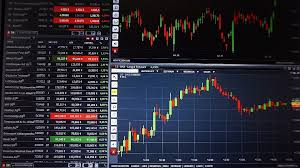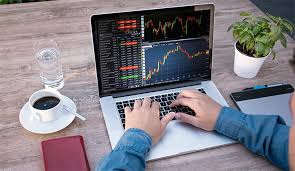
Mastering Forex Trading Online: A Comprehensive Guide
Forex trading online has become increasingly popular as individuals seek to capitalize on the opportunities presented by the global currency markets. With the rise of technology, trading currencies has never been easier or more accessible. If you’re looking to dive into forex trading, this guide will help you understand the mechanics of trading, strategies to implement, and essential tips to ensure your success. For more about the forex market, visit forex trading online exbroker-turkiye.com.
Understanding Forex Trading
At its core, forex trading involves the exchange of one currency for another in the foreign exchange market. This market is the largest and most liquid financial market in the world, with a daily trading volume exceeding $6 trillion. Unlike traditional stock markets, the forex market operates 24 hours a day, five days a week, allowing traders to react to global events and trends in real time.
How the Forex Market Works
The forex market operates on a decentralized basis, meaning that it doesn’t have a centralized exchange like stock markets do. Instead, trades are conducted over the counter (OTC) through a global network of banks, brokers, and financial institutions. Currencies are traded in pairs, with traders speculating on the rise and fall of one currency against another. For example, if a trader believes that the Euro (EUR) will increase in value compared to the US Dollar (USD), they will buy the EUR/USD currency pair.
Key Concepts in Forex Trading
Currency Pairs
Currencies are traded in pairs, which consist of a base currency and a quote currency. The base currency is the first currency listed in the pair, while the quote currency is the second. For instance, in the pair EUR/USD, the Euro is the base currency, and the US Dollar is the quote currency. Understanding how currency pairs work is crucial for effective trading.
Bid and Ask Price

The bid price represents the maximum price that a buyer is willing to pay for a currency, while the ask price is the minimum price that a seller is willing to accept. The difference between the bid and ask price is known as the spread. Traders need to be aware of the spread because it affects profitability on each trade.
Pips
A pip (percentage in point) is a unit of measurement that represents the smallest price change in a currency pair. Most currency pairs are quoted to four decimal places, making one pip equal to 0.0001. Understanding pips is essential for determining potential gains or losses on trades.
Leverage
Leverage allows traders to control a larger position in the market with a smaller amount of capital. For example, a leverage of 100:1 means that for every $1 in a trading account, a trader can control $100 in the market. While leverage can amplify profits, it also increases the potential for significant losses, making risk management essential.
Strategies for Successful Forex Trading
Technical Analysis
Technical analysis involves using historical price data and chart patterns to predict future market movements. Traders analyze price charts, identify trends, and use various indicators, like moving averages and relative strength index (RSI), to make informed trading decisions.
Fundamental Analysis
Unlike technical analysis, which focuses on price patterns, fundamental analysis looks at economic indicators, interest rates, and geopolitical events that can affect currency values. By understanding the broader economic picture, traders can anticipate currency fluctuations and adjust their strategies accordingly.
Scalping

Scalping is a trading strategy that involves making numerous small trades throughout the day to capture minor price movements. Scalpers rely on quick decision-making and execution, often holding positions for just a few seconds to minutes. This strategy requires a solid understanding of market dynamics and a well-developed trading plan.
Day Trading
Day trading involves speculating on currency price movements within a single trading day. Traders may open and close multiple positions throughout the day, taking advantage of short-term price fluctuations. This strategy requires active monitoring of the market and strong analytical skills.
Choosing the Right Forex Broker
Selecting a reliable and trustworthy forex broker is vital for your trading success. Here are some factors to consider:
- Regulation: Ensure your broker is regulated by a reputable authority to safeguard your investments.
- Trading Platform: A good trading platform should be user-friendly, offer a range of tools and resources, and provide fast execution speeds.
- Spreads and Fees: Compare the spreads and fees charged by different brokers to ensure you’re getting the best value.
- Customer Support: Reliable customer support can help resolve any issues or concerns you may face while trading.
Risk Management in Forex Trading
One of the biggest challenges in forex trading is managing risk. Here are some effective risk management strategies:
- Set Stop-Loss Orders: A stop-loss order automatically closes a trade at a predetermined price to minimize losses.
- Use Take-Profit Orders: A take-profit order secures profits by closing a trade when a specific profit level is reached.
- Diversify Your Portfolio: Diversifying your trades across different currency pairs can reduce risk exposure.
- Never Risk More Than You Can Afford to Lose: Set a budget for your trading activities and stick to it.
Conclusion
Forex trading online offers a plethora of opportunities for profit, but it also comes with substantial risks. By understanding the mechanics of the forex market, employing effective strategies, choosing the right broker, and implementing strong risk management practices, traders can navigate this dynamic market with confidence. Remember, success in forex trading requires ongoing education and practice, so invest time in enhancing your skills and knowledge to achieve your trading goals.
